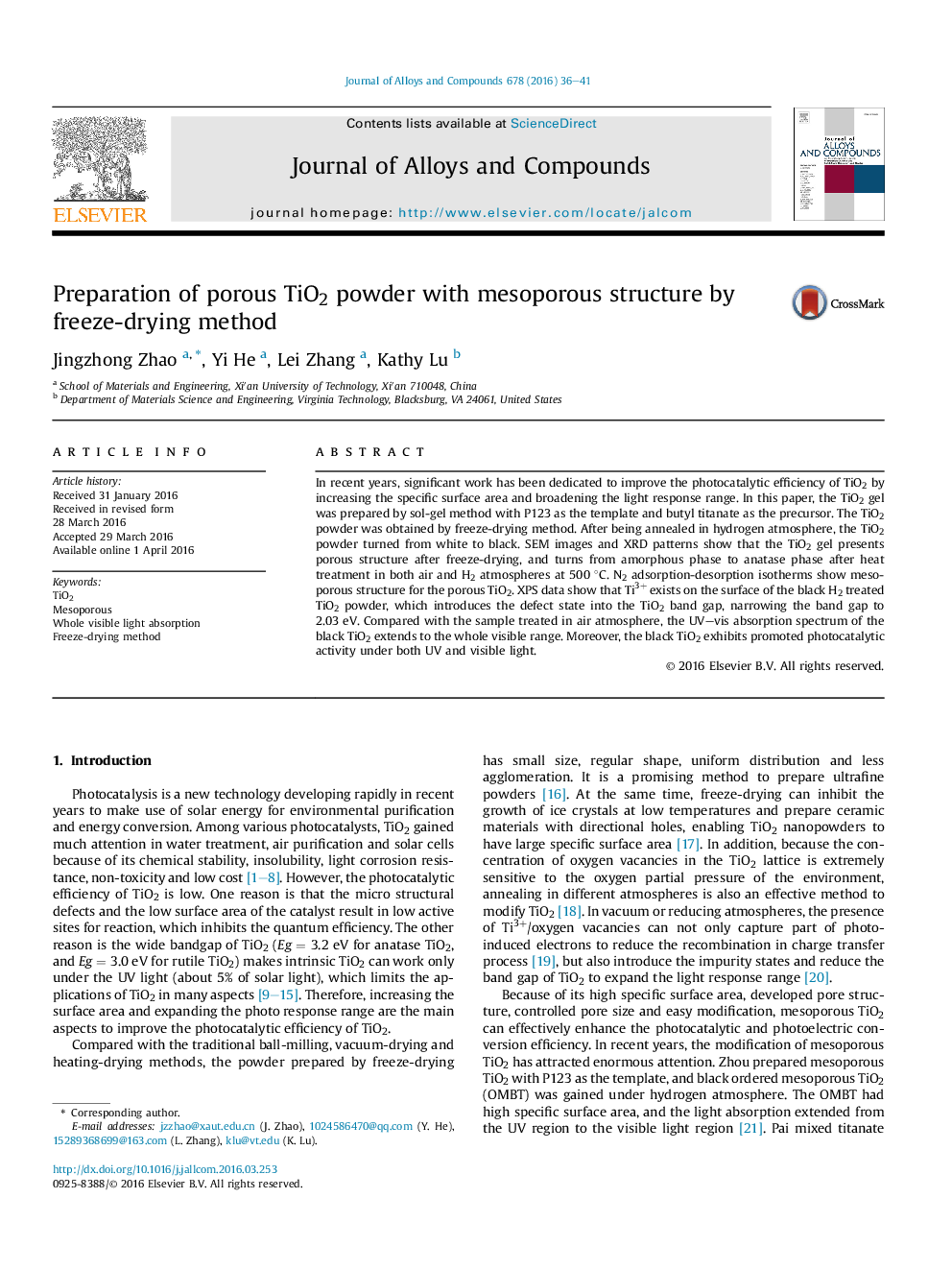| Article ID | Journal | Published Year | Pages | File Type |
|---|---|---|---|---|
| 1606100 | Journal of Alloys and Compounds | 2016 | 6 Pages |
•Freeze-drying method was used to acquire porous TiO2 powder.•Mesoporous structure was obtained by sol-gel method.•H2-treatment extends the absorption spectrum of the black TiO2 powder to the whole visible range.
In recent years, significant work has been dedicated to improve the photocatalytic efficiency of TiO2 by increasing the specific surface area and broadening the light response range. In this paper, the TiO2 gel was prepared by sol-gel method with P123 as the template and butyl titanate as the precursor. The TiO2 powder was obtained by freeze-drying method. After being annealed in hydrogen atmosphere, the TiO2 powder turned from white to black. SEM images and XRD patterns show that the TiO2 gel presents porous structure after freeze-drying, and turns from amorphous phase to anatase phase after heat treatment in both air and H2 atmospheres at 500 °C. N2 adsorption-desorption isotherms show mesoporous structure for the porous TiO2. XPS data show that Ti3+ exists on the surface of the black H2 treated TiO2 powder, which introduces the defect state into the TiO2 band gap, narrowing the band gap to 2.03 eV. Compared with the sample treated in air atmosphere, the UV–vis absorption spectrum of the black TiO2 extends to the whole visible range. Moreover, the black TiO2 exhibits promoted photocatalytic activity under both UV and visible light.
